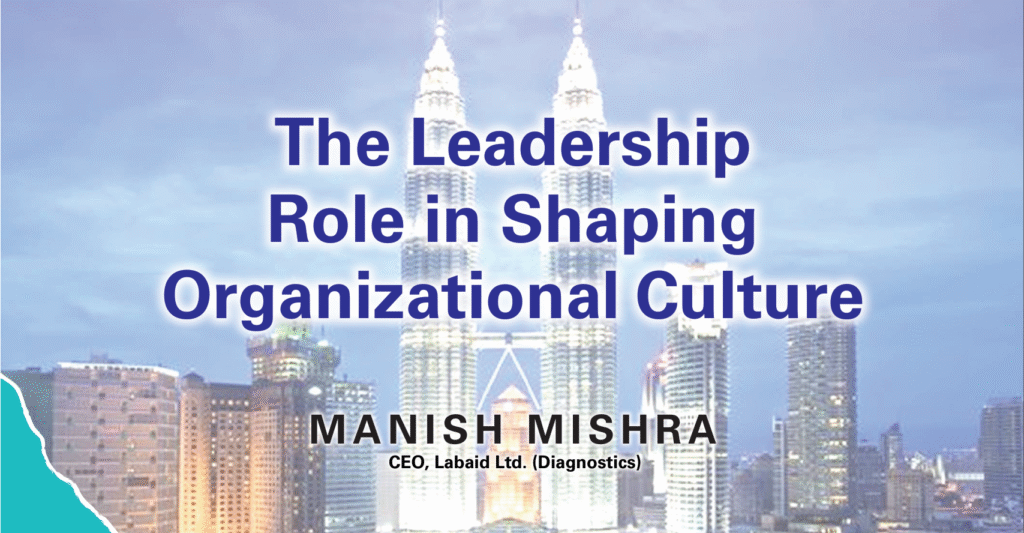
Organizational culture—the shared values, beliefs, and behaviors that define
how a company operates—is a critical driver of success. Leadership plays a
pivotal role in cultivating a positive, inclusive, and high-performing culture
that aligns with the organization’s mission and goals. By modeling desired
behaviors, fostering open communication, and implementing strategic
initiatives, leaders can shape a culture that enhances employee engagement,
innovation, and productivity. This article explores the leadership role in
developing organizational culture, provides real-world examples, and
suggests actionable activities to foster a thriving workplace culture.
The Leadership-Culture Connection
Leaders set the tone for organizational culture by defining priorities,
establishing norms, and demonstrating values through their actions. A
strong culture drives employee retention, attracts top talent, and
improves performance, with studies showing that companies with positive
cultures see 4x higher revenue growth (Forbes, 2024). Effective leaders
influence culture by:
- Modeling Behavior: Leaders’ actions serve as a blueprint for
employees, reinforcing desired values like integrity or collaboration. - Communicating Vision: Clear articulation of the organization’s mission
aligns teams and fosters a sense of purpose. - Empowering Employees: Leaders who encourage autonomy and
recognize contributions build trust and engagement. - Driving Accountability: Setting expectations and holding teams
accountable ensures cultural values are upheld.
Examples of Leadership Shaping Culture
Example 1: Satya Nadella at Microsoft
When Satya Nadella became CEO of Microsoft in 2014, he transformed the
company’s culture from competitive and siloed to collaborative and
innovative. Nadella emphasized a “growth mindset,” encouraging
employees to learn from failures and embrace experimentation. He
modeled this by fostering cross-departmental collaboration and
prioritizing diversity and inclusion. By 2025, Microsoft’s employee
engagement scores rose by 20%, and the company’s market value tripled,
demonstrating the impact of leadership-driven cultural change (Harvard
Business Review, 2025).
Example 2: Patagonia’s Values-Driven Culture
Patagonia’s leadership, led by founder Yvon Chouinard, has embedded
environmental sustainability into its culture. Leaders actively participate in
environmental initiatives, such as clean-up drives, and align business
decisions with ecological values. For example, Patagonia donates 1% of sales
to environmental causes and encourages employees to engage in activism.
This leadership commitment has fostered a purpose-driven culture, with 85%
of employees reporting high job satisfaction (Forbes, 2024).
Activities to Develop Culture from the Leadership Level
To cultivate a strong organizational culture, leaders can implement the
following activities:
- Define and Communicate Core Values
∆ Activity: Host workshops to collaboratively define 3-5 core values (e.g.,
integrity, innovation, inclusivity) with input from employees at all levels.
∆ Execution: Create a values statement and integrate it into onboarding,
performance reviews, and company communications. For example,
leaders can share stories of employees embodying these values in
monthly town halls.
∆ Impact: Aligns teams around a shared purpose, as seen in companies
like Zappos, where values drive hiring and decision-making
- Lead by Example
∆ Activity: Leaders should visibly demonstrate desired behaviors, such as
transparency or work-life balance. For instance, a CEO might publicly take
a mental health day to normalize well-being.
∆ Execution: Schedule regular “walk-the-talk” moments, like joining
team brainstorming sessions or acknowledging mistakes openly in
meetings.
∆ Impact: Builds trust and encourages employees to mirror leadership
behaviors, fostering authenticity
- Foster Open Communication
∆ Activity: Implement regular feedback mechanisms, such as anonymous
surveys or “Ask Me Anything” sessions with leadership.
∆ Execution: Use tools like Slack or Microsoft Teams to create channels
for cross-team dialogue and ensure leaders respond promptly to
feedback.
∆ Impact: Creates a culture of transparency, as seen at Salesforce, where
open communication drives 90% employee satisfaction (Great Place to
Work, 2025)
- Recognize and Reward Cultural Champions
∆ Activity: Establish a recognition program that rewards employees who
exemplify cultural values, such as collaboration or innovation.
∆ Execution: Introduce monthly awards with tangible rewards (e.g.,
bonuses, extra time off) and highlight winners in company-wide
communications.
∆ Impact: Reinforces desired behaviors, as demonstrated by Google’s
peer recognition programs, which boost morale and engagement.
- Invest in Learning and Development
∆ Activity: Create leadership training programs focused on cultural
stewardship, such as diversity training or emotional intelligence
workshops.
∆ Execution: Partner with platforms like LinkedIn Learning or host
in-house sessions to equip leaders with skills to foster inclusivity and
collaboration.
∆ Impact: Empowers leaders to sustain culture, as seen at Deloitte,
where leadership training correlates with a 15% increase in employee
retention (Deloitte Insights, 2024).
Challenges and Considerations
Building a strong culture requires overcoming challenges like resistance to
change or inconsistent leadership behavior. Leaders must ensure
alignment between stated values and daily practices to avoid employee
skepticism. Additionally, fostering inclusivity is critical to prevent cultural
biases that could alienate diverse teams. Regular culture audits and
employee feedback can help leaders identify gaps and adjust strategies.
Leadership is the cornerstone of organizational culture, shaping how
employees connect, collaborate, and perform. By modeling values,
communicating vision, and implementing targeted activities, leaders can
create a culture that drives success and employee fulfillment. Examples
like Microsoft and Patagonia illustrate the transformative power of
leadership in building purpose-driven, high-performing workplaces.
Through intentional actions and consistent commitment, leaders can
cultivate a culture that thrives in today’s dynamic business landscape.
Sources:
- Forbes, “The Business Case for Culture,” 2024
- Harvard Business Review, “Microsoft’s Cultural Transformation,” 2025
- Great Place to Work, “Salesforce Employee Satisfaction Survey,” 2025
- Deloitte Insights, “Leadership and Retention,” 2024
